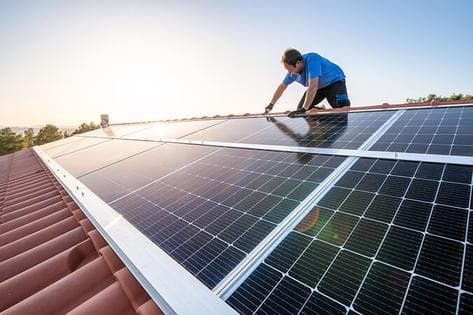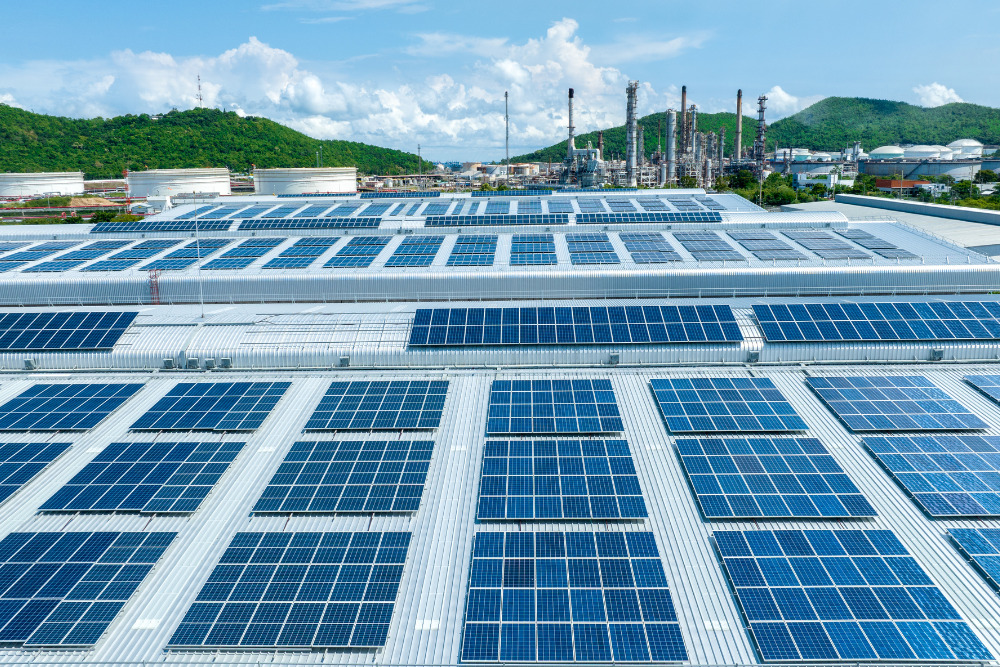Everything about Solar Panel Company
Everything about Solar Panel Company
Blog Article
Solar Panel Systems Virginia: Lumina Solar Focuses On Supplying Advanced Photovoltaic Solutions For Houses And Businesses
History and Establishing
Have you ever questioned how a solar panel company springs from a simple stimulate of inspiration into a powerhouse of renewable resource? It often begins with a vision-- one sustained by a mix of development, determination, and a pinch of serendipity. The journey of numerous solar business mirrors the evolution of the innovation itself: from large, inefficient panels to sleek, high-efficiency marvels utilizing the sun's bounty.
The Early Days
In the late 20th century, when solar power was still a specific niche concept, pioneers planted seeds for what would become a worldwide motion. Think of a small workshop filled with curious engineers, tirelessly explore solar batteries. Their enthusiasm was palpable, typically driven by a desire to combat climate change and lower dependence on fossil fuels.
One such anecdote is about a founder who, inspired by a camping trip, realized that even in remote areas, the sun might power important gadgets. This simple observation triggered a company's objective to equalize access to clean energy.
Establishing Principles

- Innovation: Continually pressing the borders of solar innovation to enhance efficiency and toughness.
- Sustainability: Committing to environmentally friendly production and lowering carbon footprints.
- Availability: Making renewable resource options cost effective and useful for everyday users.
Turning points in Development
| Year | Key Event |
|---|---|
| 1985 | Company founded in a little garage, focusing on research and advancement. |
| 1995 | Industrial solar panel item introduced, acquiring local attention. |
| 2005 | Broadened to international markets, welcoming worldwide sustainable energy objectives. |
| 2015 | Presented innovative solar panel innovation with improved energy conversion. |
Isn't it interesting how these incremental steps, frequently ignored, shape the energy landscape today? The solar panel company story is not practically technology; it has to do with a ruthless mission for a brighter, cleaner future.

Developments in Solar Panel Technologies
Ever noticed how some photovoltaic panels gleam brighter and last longer? It's not magic; it's the science of photovoltaic performance. Modern photovoltaic panel companies invest heavily in technologies like bifacial cells, which capture sunshine from both sides, boosting energy harvest without broadening roofing system area. Have you ever wondered why some panels carry out better on cloudy days? That is because of advances in thin-film solar technology, which prospers under diffused light conditions.
Product Variations Tailored to Special Requirements
One size never ever fits all. Solar panel suppliers now offer:
- Monocrystalline panels for optimum effectiveness and streamlined aesthetic appeals, perfect for space-constrained roofs.
- Polycrystalline panels, which use an economical option without compromising too much output.
- Building-integrated photovoltaics (BIPV), combining solar tech effortlessly into architectural aspects like windows and facades.
Picking the best product isn't just about in advance cost; it has to do with matching your environment, energy goals, and long-lasting savings. Homes shaded by trees require panels that stand out in low-light circumstances, something lots of ignore until energy expenses climb up all of a sudden.
Technical Tips for Ideal Selection
- Assess the temperature coefficient-- lower worths indicate panels lose less efficiency on hot days.
- Search for panels with improved anti-reflective coatings to maximize light absorption.
- Consider the panel's warranty not simply for problems, however for guaranteed power output over years.
- Do not ignore the significance of the inverter technology combined with the panels; it can make or break your system's efficiency.
Beyond Panels: Emerging Patterns
Picture photovoltaic panels that adjust their angle instantly to chase after the sun-- tracking systems are becoming more available, increasing yield substantially. Or solar tiles that mix undetectably into your roofline, changing your home into a silent, self-sufficient power generator. These developments are reshaping what a solar panel company provides-- not just products, but incorporated energy services.
Market Existence and Global Operations
Ever question why some photovoltaic panel companies seem to sprout here up in every corner of the world while others hardly make a ripple? The difference lies not simply in technology but in mastering the art of navigating diverse markets. Broadening globally resembles planting seeds in various climates-- you must comprehend each environment's distinct conditions to grow.
Take, for instance, the complex dance of logistics and supply chain management. Delivering panels halfway throughout the world isn't simply about distance; it's about timing, custom-mades, tariffs, and adjusting to regional demand fluctuations. A company with robust worldwide operations expects these variables, guaranteeing panels arrive on schedule without pumping up costs. This insight is no little accomplishment and often separates industry leaders from followers.
Key Techniques for Expanding Market Existence
- Localized manufacturing: Developing production hubs near target markets lowers shipping delays and import complexities.
- Strategic collaborations: Teaming up with local companies accelerates market penetration and constructs trust.
- Adaptive item style: Customizing photovoltaic panel tech to weather, sun strength, and infrastructure nuances improves efficiency and acceptance.
What about the human aspect? Solar panel business operating internationally should fix up cultural differences and regulative nuances without losing sight of their core objective. For instance, what operate in a sun-drenched desert might falter in a damp coastal region. Sometimes, the most innovative option is just listening-- soaking up local insights to refine innovation and method.
Professionals frequently recommend a phased rollout rather than a shotgun growth. Why run the risk of overextension when measured development builds sustainable momentum? Scaling carefully means balancing ambition with operational durability - Residential Solar Panels Virginia. After all, in the race for sustainable energy dominance, patience can be as important as speed
Environmental Impact and Sustainability Practices
When photovoltaic panels initially emerged, numerous presumed they brought absolutely no environmental baggage. The reality is more nuanced. The production of solar batteries includes rare earth metals and energy-intensive procedures, which can leave a sizable carbon footprint before the panels even reach roofs. The real ecological expense depends greatly on the sustainability practices employed by the solar panel business throughout the lifecycle of their items.
How often do we stop briefly to consider what happens to photovoltaic panels at the end of their beneficial life? Unlike batteries or electronic devices, photovoltaic panels can last 25-30 years, but disposal and recycling pathways stay underdeveloped in numerous regions. A business devoted to decreasing environmental harm will have a robust strategy for recycling photovoltaic products, salvaging important silicon, glass, and metals to avoid land fill build-up.
Key Sustainability Strategies
- Making use of low-impact production strategies that minimize water and energy intake.
- Implementing closed-loop systems to recycle production waste back into new panels.
- Taking part in transparent supply chain audits to guarantee ethical sourcing of raw materials.
- Creating panels for much easier disassembly to aid future recycling efforts.
It's worth keeping in mind that some solar companies have actually originated ingenious approaches, such as integrating biodegradable components or using less hazardous chemicals during fabrication. This not just decreases environmental stress however also sets a precedent for the market. The question stays: can the solar market truly pivot towards a circular economy model without sacrificing efficiency or affordability?
Professional Tips for Examining Sustainability
- Inquire about the business's dedication to carbon-neutral production and whether they offset emissions.
- Investigate if they partner with certified recycling centers devoted to solar panel waste.
- Search for transparency reports detailing environmental impacts and sustainability goals.
- Consider the durability and guarantee of panels as an indirect measure of resource performance.
In the end, deciding for solar power needs to imply more than just slashing electrical energy expenses; it has to do with nurturing a future where energy is collected properly and waste is attentively handled. Photovoltaic panel companies that embrace this viewpoint not only light up homes but also cast a brighter light on sustainable innovation.
Report this page